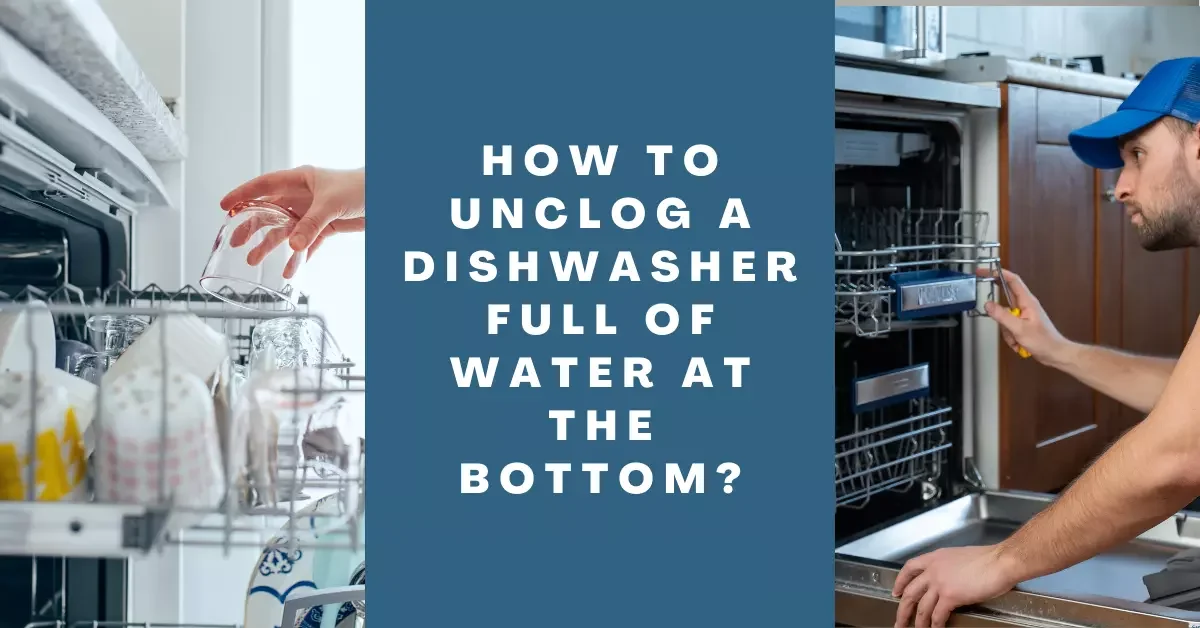Don’t freak out if the dishwasher has a puddle of water at the bottom after a cycle. Even while the lingering liquid in the dishwasher may indicate that it requires expert maintenance, it’s usually only a small problem that you should take care of by yourself. So, what should one do when their dishwasher is full of water at the bottom?
Your dishwasher must be clogged due to debris and food particles. To clear it out, check the dishwasher drain, and clear the drain basket around the lower sprayer arm using a wire hanger.
The majority of the time that there is water at the bottom of your dishwasher, it can usually be fixed at home. Perform these quick fixes before contacting a professional to repair the problem. Let’s dive in!
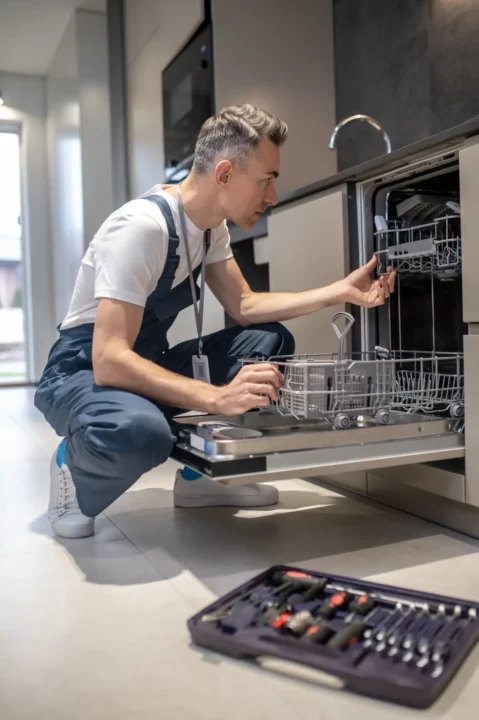
What causes the dishwasher’s bottom to be wet?
Clutters in the filtration system, sewerage system, outflow hose, drainage compressor, or air bubbles are the cause of water standing in the bottom of a dishwasher.
The dishwasher won’t flow correctly if there is an accumulation of junk or silt in these components. The issue can be resolved by identifying the obstruction and removing the clutter.
Steps to remove water from your dishwasher bottom
Follow these steps to remove the water at your dishwasher’s bottom.
Step 1: Switch off the dishwasher
Disconnect the machine from the wall or turn off the fuse box in your junction box before actually operating the dishwasher to avoid electric shocks.
Step 2: Drain the water standing at the bottom of the dishwasher
Use napkins to cover the area underneath the dishwasher, and then shovel the wastewater into a big bowl or the basin using a quart container or small bowl. Use a sponge, towel, or napkin to absorb the remaining liquid once the water is too less to drain.
Step 3: Check whether your dishwasher’s drainage system is working
Food scraps or other material clogging the sewage system is among the most frequent causes of water standing at the bottom of your dishwasher.
Inspect the dishwasher’s drainage, clean the area surrounding the bottom sprayer arm, and use a wire hanger to clear any obstructions with garbage.
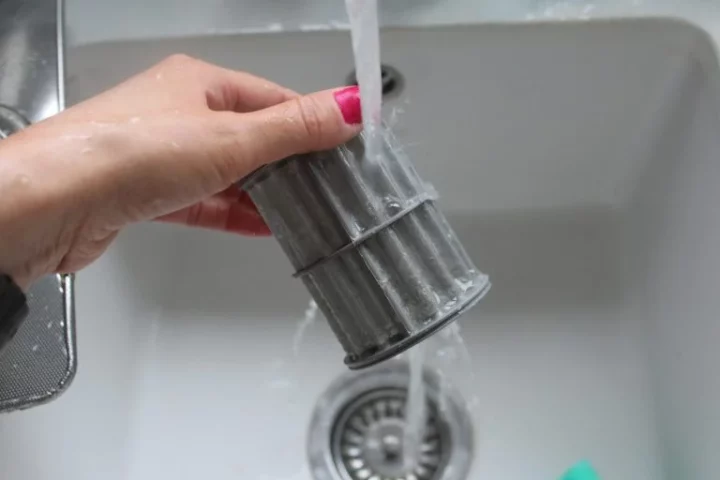
Step 4: Clean the pump
The pump has two impellers: the top piece pumps water into the dishwasher, and the bottom one pushes water toward the vent.
Water can accumulate when particles like broken glass fragments and other junk stop the impellers from rotating. Take out any debris you uncover that could be causing these obstructions.
Step 5: Clean the sprayer arms
Sprayer arms are located at the bottom of your dishwasher. Gently pop them out and inspect the holes for any food debris or junk that may have accumulated.
Clean them out with the help of a wire hanger and rinse them out with warm water. Ensure all debris has been removed, then set them aside.
Step 6: Clean the dishwasher filter
Check your instruction manual to see where the dishwasher filter is located, then use a screwdriver to remove it.
Rinse off the screen with water and clean the surrounding area with a damp sponge. Replace the screen and the sprayer arms as well.
Step 7: Assess the supply line
If you have gone through all the above steps and the water is still there, then there is probably a clog in your supply line. Find the supply line, then place a bucket underneath so that any water that comes out can be collected in it.
Then disconnect the plumbing line that leads to the main drain. Let the water drain into the bucket as you look for clogs, then use a wire hanger to remove any debris to dislodge it.
After you are done cleaning it, reattach the supply line and run an empty cycle through the dishwasher.
Step 8: Clean the drain line
The drain line is located at the back of the dishwasher under the filter screen.
Mix 1/2 cup of baking soda and 1/2 cup of water to form a paste. Pour this paste down the drain line through the filter screen, then pour in 1/2 cup vinegar and let it sit for 15 minutes.
Then pour in hot water to drain out the solution.
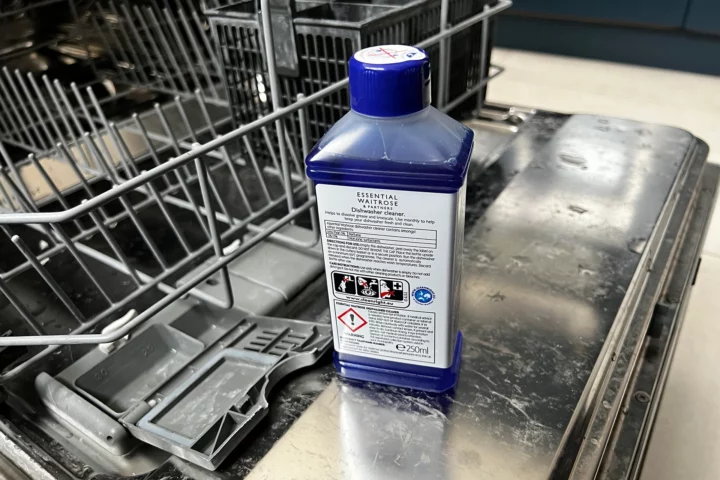
Step 9: Straighten out the drain hose
Sometimes the cause of blockage could be a twisted drain hose. Find the dishwasher drain hose under the sink, typically held up by screws or clips. Then gently straighten out any kinks or twists.
Step 10: Operate the garbage disposal
Disconnect the drain hose from the place it attaches to the trash compactor and use a horizontal screwdriver to remove any obstructions. This is necessary because an air bubble in a connected hose might stop water from emptying.
After clearing any obstructions, check to see whether the kitchen faucet drain is blocked and run the garbage disposal. Don’t ever put your fingers in the garbage disposal since doing so might seriously injure you.
Step 11: Run an empty cycle
Finally, when you are done with all the steps, switch the power on, then run a complete dishwashing cycle. When it’s done, open the dishwasher door and if there’s still an abnormal amount of water standing at the bottom, then it’s time to call for professional help.
Can you run an empty cycle on your dishwasher?
How to prevent water from building up in your dishwasher
To prevent any water buildup in the future, follow these precautionary measures:
Utilize the proper detergent
Make sure you’re using the right detergents; either your dishwasher calls for fluid, pellets, or capsules to prevent blocking the drain. Which detergent is recommended should be specified in your manual handbook.
Ensure you’re loading the dishwasher correctly
Follow the instructions in the manual provided to see the best way the manufacturer recommended to load your dishwasher. Improper loading may make it difficult for water to drain out during a complete cycle.
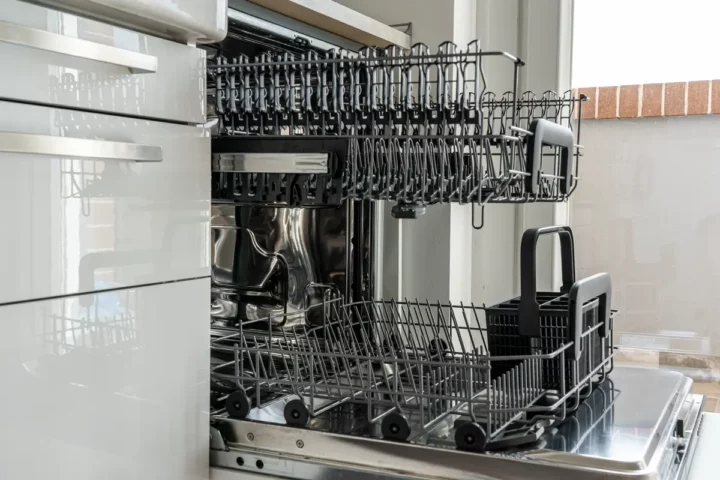
Don’t avoid the noises your washer is making
Pay attention to your machine for whirring or popping noises when the wash cycle is running. If you detect these vibrations, the drainage system and engine might have to be changed. You should get these components changed as soon as you can since they are crucial in preventing surface water in your dishwasher.
When to call in professional help
If you have followed all the troubleshooting steps mentioned above and still have water standing at the bottom, then it’s the right time to call for professional help.
A certified technician will be able to locate and fix the problem. You can claim your warranty to fix the issue or install a new dishwasher if the issue is beyond repair. Here’s a typical cost of how much a repair can cost.
Final thoughts
A broken dishwasher can be a nightmare, and so is water standing at the bottom of it. Following the steps in this article, you will be able to locate the issue and fix it yourself at home; if not, then it means professional help is mandatory. Happy dishwashing!



